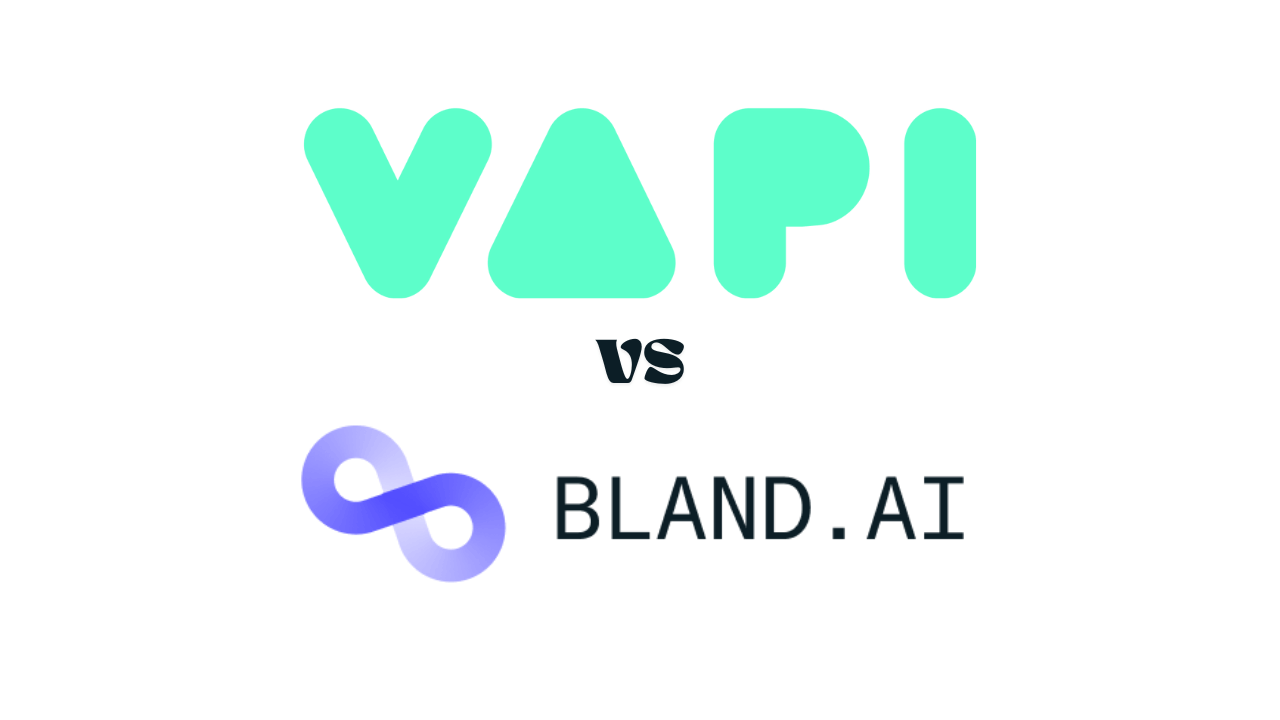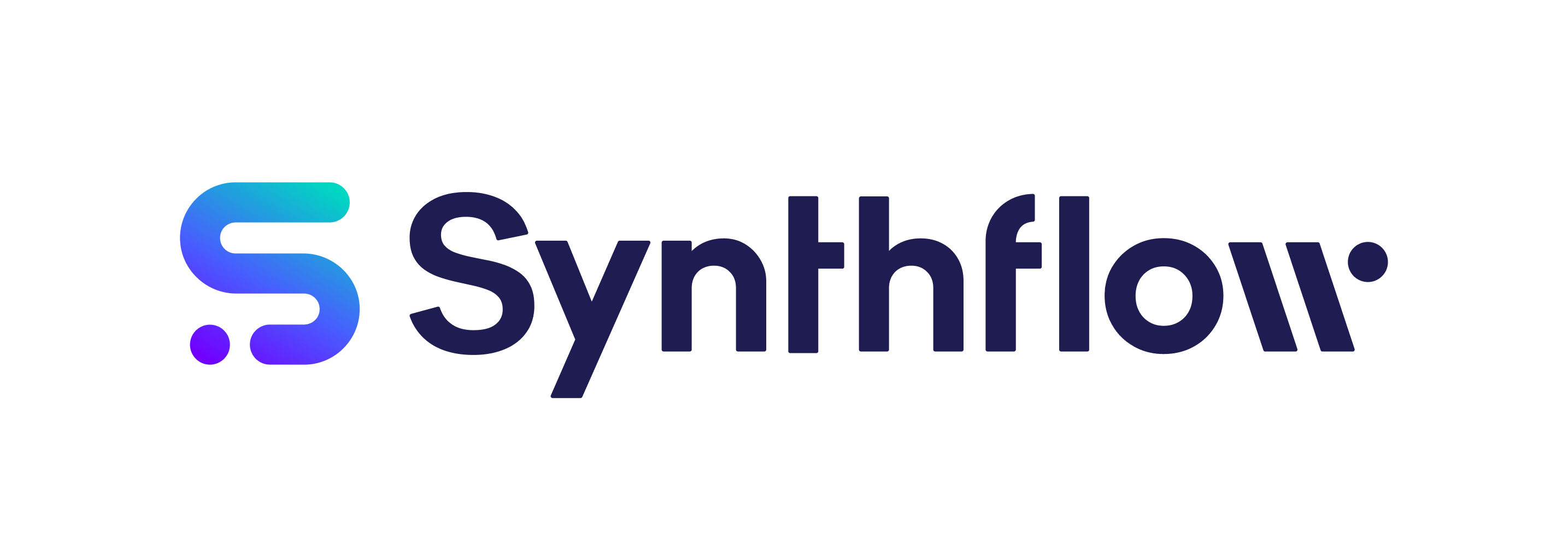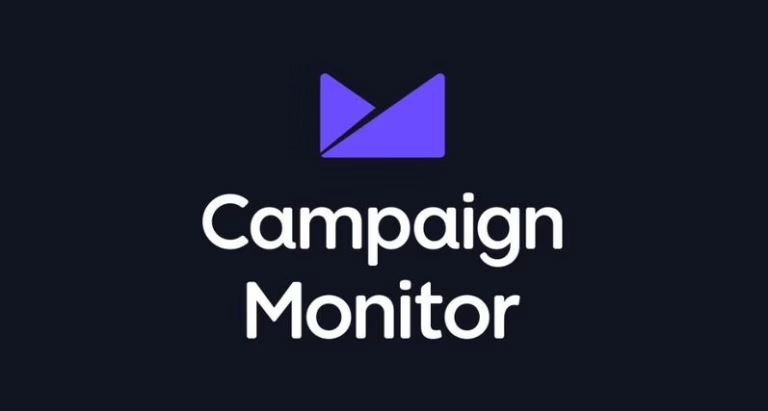Liked? Please share for others whom you love and care!
VAPI Voice AI: A Step-by-Step Guide to Implementing AI Chatbots
What is Vapi voice Ai?
VAPI Voice AI is a cutting-edge technology that enables businesses to create intelligent voice assistants and chatbots. It leverages advanced natural language processing (NLP) and machine learning algorithms to understand and respond to human speech in a natural and conversational manner.
Imagine having a personal assistant that understands you, learns from your interactions, and can help with almost anything. That’s Vapi Voice AI for you! With the vapi-ai API, you can integrate this powerful AI into your applications and devices.
It is a groundbreaking tool that makes adding voice capabilities to your apps and services easier than ever! Using the Vapi-AI API, developers can create engaging, human-like voice interactions, perfect for voice assistants, call centers, and beyond.
Key features and capabilities of VAPI Voice AI include:
- Natural Language Understanding: VAPI Voice AI can accurately understand and interpret human speech, even in complex and noisy environments.
- Text-to-Speech Synthesis: VAPI Voice AI can generate human-like speech from text, allowing for natural and engaging interactions.
- Dialog Management: VAPI Voice AI can manage complex conversations, understanding context and responding appropriately to user inquiries.
- Customizable Voice Models: VAPI Voice AI allows businesses to create custom voice models that match their brand and target audience.
- Integration with Existing Systems: VAPI Voice AI can be easily integrated with existing business applications and systems.
VAPI Voice AI can be used in a variety of applications, including:
- Customer Service: VAPI Voice AI can provide 24/7 customer support, answering questions and resolving issues efficiently.
- Virtual Assistants: VAPI Voice AI can be used to create intelligent virtual assistants that can perform tasks like scheduling appointments, setting reminders, and controlling smart home devices.
- Interactive Voice Response (IVR): VAPI Voice AI can improve the efficiency and effectiveness of IVR systems by providing more natural and intuitive interactions.
- Education and Training: VAPI Voice AI can be used to create personalized learning experiences and provide language tutoring.
How Vapi Voice AI works?
VAPI Voice AI works by combining advanced natural language processing (NLP) and machine learning techniques to understand and respond to human speech.
Here’s a breakdown of the key steps involved:
- Speech Recognition:
- The user’s voice input is captured and converted into digital audio signals.
- VAPI Voice AI’s speech recognition algorithms analyse the audio signals and identify individual words and phrases.
- Natural Language Understanding (NLU):
- Once the words and phrases are identified, VAPI Voice AI’s NLU components interpret the meaning and intent behind the user’s utterance.
- This involves understanding the context, identifying keywords and entities, and determining the user’s goals or requests.
- Dialog Management:
- VAPI Voice AI’s dialog management system keeps track of the conversation’s context and history.
- It determines the appropriate response based on the user’s input and the ongoing conversation.
- Text-to-Speech Synthesis:
- Once the response is generated, VAPI Voice AI’s text-to-speech synthesis module converts it into spoken language.
- The synthesized speech is then played back to the user.
Key technologies and techniques used in VAPI Voice AI:
- Neural Networks: Deep learning models like recurrent neural networks (RNNs) and convolutional neural networks (CNNs) are used for speech recognition and NLU tasks.
- Natural Language Processing (NLP): Techniques like tokenization, part-of-speech tagging, named entity recognition, and sentiment analysis are employed to understand the meaning of text.
- Machine Learning: Algorithms like decision trees, random forests, and support vector machines are used for classification and prediction tasks.
- Dialog Management: State machines, rule-based systems, and machine learning models are used to manage the flow of conversation.
By combining these technologies and techniques, VAPI Voice AI can provide accurate and natural language understanding, generate appropriate responses, and engage in meaningful conversations with users.
What sets VAPI Voice AI apart?
VAPI Voice AI stands out from other voice AI solutions due to several key factors:
- Advanced Natural Language Understanding (NLU): VAPI Voice AI’s NLU capabilities allow it to accurately understand and interpret human speech, even in complex and noisy environments. This enables it to engage in more natural and meaningful conversations.
- Customizable Voice Models: VAPI Voice AI allows businesses to create custom voice models that match their brand and target audience. This helps to create a more personalized and engaging experience for users.
- Integration with Existing Systems: VAPI Voice AI can be easily integrated with existing business applications and systems. This makes it a versatile solution that can be adapted to various use cases.
- Scalability: VAPI Voice AI is designed to handle large volumes of traffic and can be scaled to meet the needs of growing businesses.
- Continuous Improvement: VAPI Voice AI is constantly being updated and improved based on user feedback and advancements in AI technology. This ensures that it remains at the forefront of voice AI innovation.
- Security and Privacy: VAPI Voice AI is committed to protecting user data and privacy. It employs robust security measures to ensure that sensitive information is kept confidential.
- Exceptional Customer Support: VAPI Voice AI provides excellent customer support, helping businesses get the most out of the platform and address any issues that may arise.
VAPI Voice AI’s advanced NLU capabilities, customization options, integration flexibility, scalability, continuous improvement, security, and customer support set it apart from other voice AI solutions.
These factors make it a valuable tool for businesses looking to improve customer satisfaction, increase efficiency, and drive innovation.
How to setup Vapi Voice AI
Setting Up VAPI Voice AI: A Step-by-Step Guide
- Create an Account:
- Visit the VAPI Voice AI official website and sign up for an account. You might need to provide basic information like your name, email, and company details.
- Choose a Plan:
- VAPI Voice AI likely offers different pricing plans based on usage, features, and scalability. Select the plan that best suits your business needs and budget.
- Customize Your Voice Model:
- VAPI Voice AI often provides tools to customize your voice model. This might involve selecting a base voice, adjusting pitch, tone, and speed, or even creating a custom voice from scratch.
- Design Your Conversations:
- Use VAPI Voice AI’s development tools to design the conversational flows and responses. This includes defining intents, entities, and creating appropriate responses for different user queries.
- Integrate with Your Systems:
- VAPI Voice AI likely offers integration options with various platforms and technologies. Follow the provided guidelines to integrate it with your website, mobile app, or other systems.
- Test and Iterate:
- Thoroughly test your VAPI Voice AI implementation to ensure it functions as expected. Gather feedback and make necessary adjustments to improve the user experience.
- Deploy and Monitor:
- Once satisfied with the performance, deploy your VAPI Voice AI solution. Continuously monitor its performance, gather user feedback, and make updates as needed.
Additional Tips:
- Leverage Pre-built Templates: VAPI Voice AI might offer pre-built templates for common use cases like customer service or virtual assistants. These can accelerate the development process.
- Utilize Training Data: Provide VAPI Voice AI with a sufficient amount of training data to improve its accuracy and understanding of natural language.
- Consider Customization: Explore VAPI Voice AI’s customization options to tailor the solution to your specific needs and brand.
- Seek Support: If you encounter any difficulties, reach out to VAPI Voice AI’s support team for assistance.
By following these steps and leveraging VAPI Voice AI’s capabilities, you can effectively set up and deploy a powerful voice AI solution for your business.
Vapi can help you with more specific instructions based on your use case or integration requirements. For example:
- What is the primary purpose of your VAPI Voice AI implementation? (e.g., customer service, virtual assistant, IVR)
- Which platforms or systems do you need to integrate with? (e.g., website, mobile app, CRM, ERP)
- Are there any specific features or functionalities you require? (e.g., speech-to-text, text-to-speech, natural language understanding)
- Do you have any existing code or infrastructure that needs to be considered?
How to store VAPI calls as notes
VAPI does not provide a built-in feature to directly store call recordings as notes. However, you can utilize the following methods to achieve this:
- Utilize the VAPI Call Analysis feature:
- VAPI’s Call Analysis feature allows you to generate a summary of the call, along with structured data extracted from it. This summary can be saved as a note in Keep.
- To enable this feature, you need to configure the “Call Analysis” section in the VAPI dashboard. Here, you can define custom prompts for summarizing and extracting structured data from calls.
- Once configured, VAPI will automatically generate a note for each call, containing the summarized information.
- Use a third-party tool:
- There are third-party tools available that can integrate with VAPI and provide features for recording and storing calls as notes.
- Some popular options include Zapier, Make (formerly Integromat), and other workflow automation tools. These tools can be configured to capture call recordings and save them as notes in Keep or other applications.
- Manual approach:
- If you prefer a manual approach, you can take notes during the call or immediately afterward, capturing the key points and information.
- You can then create a new note in Keep or other note-taking applications and record the details of the call.
- Combine methods:
- For a comprehensive solution, you can combine the VAPI Call Analysis feature with a third-party tool or manual approach to capture and store call information in a structured and organized manner.
Choose the method that best suits your needs and preferences to efficiently store VAPI call recordings as notes.
Vapi.Ai Customer service and Support
VAPI Voice AI likely offers customer service and support channels to assist users with their inquiries and issues. Here are some common methods you can expect:
- Online Documentation and Resources:
- VAPI Voice AI should provide comprehensive online documentation, tutorials, and FAQs to help users understand and utilize the platform effectively.
- User Forums and Communities:
- There may be online forums or communities where users can discuss their experiences, ask questions, and find solutions from other users.
- Email Support:
- You can typically contact VAPI Voice AI’s customer support team via email for general inquiries or to report issues.
- Live Chat Support:
- Some platforms offer live chat support, allowing you to communicate with a customer service representative in real time.
- Phone Support:
- VAPI Voice AI might provide phone support for more complex issues or for users who prefer to speak with a representative directly.
- Ticketing System:
- You may be able to submit support tickets through a web-based ticketing system, which allows you to track the progress of your inquiry.
When contacting VAPI Voice AI’s customer support, be prepared to provide the following information:
- Your account details: Username, email address, or customer ID.
- A detailed description of the issue or question: Be as specific as possible to help the support team understand your problem.
- Any relevant screenshots or error messages: These can be helpful in diagnosing and resolving issues.
Exploring Vapi.ai Alternatives:
If you’re looking for alternatives to Vapi Voice AI, several options exist. Some popular contenders include:
- Retell AI: Focuses on compliance and real-time features, making it ideal for secure voice interactions.
Retell AI’s platform is designed to adhere to strict data privacy regulations, ensuring that sensitive information is protected. Additionally, its real-time capabilities enable immediate responses and interactions, providing a more natural and engaging user experience.
- Vocode: Offers a free open-source library alongside a hosted service, providing both cost-effectiveness and flexibility.
Vocode’s open-source library allows developers to customize and integrate its voice generation technology into various applications. The hosted service provides a convenient and user-friendly option for those who prefer a cloud-based solution.
- Elevenlabs: Provides realistic voice generation with a user-friendly interface suitable for content creation. Elevenlabs’ platform is designed to be accessible to users with minimal technical knowledge.
It offers a wide range of customizable voice options and features, making it a popular choice for content creators and voice actors.
Vapi vs Bland AI: Here’s a quick breakdown:
In the world of AI voice solutions, two names often pop up: Vapi Voice AI and Bland AI. Both offer powerful tools for generating realistic speech and enhancing voice interactions. But how do you choose between them?
Here’s a quick breakdown:
- Vapi Voice AI excels at customization and ease of development. Its intuitive platform and focus on middleware allows users with varying technical skill sets to integrate its capabilities into existing systems.
- The vapi.ai platform offers a variety of features, including natural-sounding voices in multiple languages and accents. However, it may have limitations in terms of context understanding and might require a subscription fee.
- Bland AI, on the other hand, takes a more infrastructure-level approach. It offers greater control over the underlying AI model and boasts advanced features like live data injection and fine-tuning.
- While this makes it incredibly powerful for experienced developers, the setup process might be more complex. Pricing information for Bland AI is also less readily available.
The choice between Vapi vs Bland depends on your specific needs. If you prioritize ease of use and customization, Vapi might be the better fit. For developers seeking granular control and advanced features, Bland AI could be the champion.
Consider exploring both platforms (Vapi offers a free trial) to see which one aligns better with your project and skillset.
VAPI Voice AI vs Air.Ai: Choosing the Right AI Calling Software
Both VAPI Voice AI and Air.Ai offer powerful AI-powered calling solutions, but they cater to slightly different needs. Here’s a breakdown to help you decide which one might be a better fit:
VAPI Voice AI
Strengths:
- Customization: VAPI offers more control over customizing the voice model, conversation workflows, and overall brand experience compared to Air.Ai.
- Focus on Specific Use Cases: VAPI extends beyond calls, offering features for virtual assistants, scheduling, and other customer interaction tools.
- Potential Cost-Effectiveness: While pricing information for both is limited, VAPI might lean towards a slightly more transparent pricing structure.
Weaknesses:
- Technical Complexity: Setting up and managing VAPI may require more technical expertise compared to Air.Ai.
- Limited Information: Less readily available information on specific features and successful implementations compared to Air.Ai.
Air.Ai
Strengths:
- Human-like Conversations: Air.Ai heavily emphasizes its ability to carry out lengthy, natural-sounding phone conversations, mimicking real humans.
- Large-Scale Agent Capabilities: Air.Ai boasts the ability to provide access to a vast network of AI “agents,” potentially reducing wait times for your customers.
- Integration with Multiple Applications: Air.Ai may offer integration with a wider range of existing business applications.
Weaknesses:
- Focus on Phone Calls: While Air.Ai excels in calling applications, VAPI offers a broader set of functionalities.
- Limited Customization: Air.Ai might offer less control over tailoring the AI model for your specific brand or needs.
VAPI Voice AI vs. Synthflow: A Comparison
VAPI Voice AI and Synthflow are both powerful AI platforms, but they serve different purposes. Here’s a breakdown of their key differences:
VAPI Voice AI
- Primary Function: Designed for building intelligent virtual assistants and chatbots.
- Capabilities: Natural language understanding, text-to-speech, dialog management, and integration with various systems.
- Use Cases: Customer service, virtual assistants, IVR, education, and training.
Synthflow
- Primary Function: Focused on creating high-quality, realistic-sounding voices.
- Capabilities: Text-to-speech, custom voice creation, language and accent support, and integration with various applications.
- Use Cases: Voiceovers, audio content, character voices, and language learning.
Key Differences:
- Purpose: VAPI Voice AI is primarily for building conversational AI, while Synthflow is for creating realistic voices.
- Features: VAPI offers features like natural language understanding and dialog management, while Synthflow focuses on voice generation and customization.
- Use Cases: VAPI is suitable for applications that require human-like conversation, while Synthflow is ideal for projects that need high-quality voices.
VAPI Voice AI vs. Amy.ai: AI Calling for Different Goals
Both VAPI Voice AI and Amy.ai are powerful tools for leveraging AI in the calling space, but they cater to slightly different objectives.
Let’s delve into their strengths and weaknesses to help you make an informed choice.
VAPI Voice AI
Strengths:
- Customization: Offers more control over tailoring the voice model, conversation workflows, and overall brand experience.
- Versatility: Extends beyond calls, encompassing virtual assistants, scheduling, and other customer interaction tools.
- Potential Cost-Effectiveness: Might have a slightly more transparent pricing structure compared to Amy.ai (limited information available for both).
Weaknesses:
- Technical Complexity: Setting up and managing VAPI might require more technical expertise than Amy.ai.
- Focus: While VAPI offers diverse functionalities, its core focus may not be as laser-sharp on outbound calling compared to Amy.ai.
Amy.ai
Strengths:
- Outbound Calling Focus: Tailored specifically for outbound sales and marketing efforts, excelling in conversational AI for these scenarios.
- Ease of Use: Amy.ai may have a user-friendlier interface and potentially require less technical knowledge to set up and manage.
- Proven Track Record: Amy.ai might boast more readily available information on successful implementations and case studies in the outbound calling niche.
Weaknesses:
- Customization: May offer less control over tailoring the AI model for diverse scenarios beyond outbound calling.
- Limited Functionality: Primarily focused on outbound calling, neglecting the broader range of customer interaction features offered by VAPI.
What are the alternatives to VAPI Voice AI?
VAPI Voice AI, while a powerful platform, has several competitors and alternatives in the market. Here are some of the leading options:
Cloud-Based Contact Center Platforms
- Twilio: Offers a wide range of communication APIs, including voice calling, SMS, and video.
- Genesys: Provides a comprehensive contact center solution with features like routing, IVR, and analytics.
- RingCentral: Offers a unified communications platform with voice calling, video conferencing, and messaging.
- 8×8: Provides a cloud-based contact center platform with AI-powered features and integrations.
VoIP Providers
- Vonage: Offers a variety of VoIP services, including business calling, video conferencing, and messaging.
- Zoom: Primarily known for video conferencing, Zoom also offers voice calling and messaging features.
- Nextiva: Provides a unified communications platform with voice calling, video conferencing, and collaboration tools.
AI-Powered Calling Solutions
- Gong: Focuses on AI-powered sales call analysis and coaching.
- Chorus.ai: Offers AI-powered call recording, transcription, and analysis.
- CallRail: Provides call tracking and analytics to measure marketing effectiveness.
Other AI-Powered Virtual Assistant Platforms
- Amazon Alexa: Offers a wide range of features and integrations with other Amazon services.
- Google Assistant: Provides powerful natural language understanding and integration with Google products.
- IBM Watson Assistant: Offers enterprise-focused capabilities and customization options.
- Microsoft Azure Bot Service: Provides flexibility for various use cases and integration with Microsoft Azure.
Open-Source Alternatives
- Rasa: An open-source framework for building conversational AI, offering high customization and flexibility.
- Dialogflow: A Google-backed platform that provides a user-friendly interface and integration with Google Cloud Platform.
When choosing an alternative, consider the following factors:
- Features: Does the platform offer the specific features you need, such as natural language understanding, speech synthesis, and integration capabilities?
- Scalability: Can the platform handle your current and future workload?
- Cost: What is the pricing model and overall cost of ownership?
- Ease of Use: How easy is it to set up, use, and manage the platform?
- Integration: Does the platform integrate seamlessly with your existing systems and platforms?
Is VAPI Voice AI right for me?
VAPI Voice AI might be a great fit for you if you’re looking to:
- Improve customer service: VAPI Voice AI can provide 24/7 support, answer common questions, and resolve issues efficiently.
- Create a virtual assistant: You can use VAPI Voice AI to build a virtual assistant that can perform tasks like scheduling appointments, setting reminders, and controlling smart home devices.
- Enhance your IVR system: VAPI Voice AI can provide more natural and intuitive interactions for your IVR system.
- Automate tasks: You can use VAPI Voice AI to automate tasks like data entry, order processing, and customer follow-up.
- Personalize customer experiences: VAPI Voice AI can be customized to match your brand and target audience, providing a more personalized experience for your customers.
However, VAPI Voice AI may not be the best choice for you if:
- You have limited technical expertise: VAPI Voice AI requires some technical knowledge to set up and configure.
- You have a limited budget: VAPI Voice AI may be more expensive than other options, especially for larger businesses.
- Your use case is highly specialized: VAPI Voice AI may not be able to handle highly specialized or complex use cases.
To determine if VAPI Voice AI is right for you, consider your specific needs and requirements.
You may also want to try a free trial or demo to see how it works and if it meets your expectations.
VAPI Voice AI Reviews and Complaints
While VAPI Voice AI has garnered positive reviews for its features and capabilities, there have also been some reported complaints and areas of improvement.
Common complaints and issues raised about VAPI Voice AI include:
- Limited Customization: Some users have found the customization options to be limited, especially for those with highly specific requirements.
- Technical Difficulties: A few users have reported encountering technical issues or bugs during setup or usage.
- Learning Curve: Some users have found the platform to have a steep learning curve, especially for those without prior experience in AI or development.
- Cost: The pricing model for VAPI Voice AI may be considered expensive by some, especially for smaller businesses or individual users.
- Support and Documentation: Some users have expressed dissatisfaction with the quality of customer support or the availability of comprehensive documentation.
It’s important to note that these complaints represent a minority of user experiences.
Many users have reported positive experiences with VAPI Voice AI, praising its features, ease of use, and effectiveness in improving customer service and automating tasks.
To get a more comprehensive understanding of VAPI Voice AI and its limitations, it’s recommended to:
- Read customer reviews: Search for reviews on platforms like G2, Capterra, or Trustpilot to get insights from real users.
- Check online forums and communities: Look for discussions about VAPI Voice AI on forums and social media to see what other users are saying.
- Try a free trial or demo: If possible, try a free trial or demo to experience VAPI Voice AI firsthand and assess its suitability for your needs.
By carefully considering these factors, you can make an informed decision about whether VAPI Voice AI is the right choice for your business.
VAPI Voice AI Review Reddit
I searched Reddit for VAPI Voice AI reviews and found a few discussions and comments related to the platform. Here are some key points and insights from the reviews:
Positive Reviews:
- Some users praised VAPI Voice AI for its natural language understanding and ability to handle complex queries.
- A few mentioned its integration capabilities with other systems and its customizability.
- Some users found VAPI Voice AI to be easy to use and effective for their specific needs.
Negative Reviews:
- A few users expressed concerns about pricing and found VAPI Voice AI to be expensive for their budget.
- Some mentioned technical difficulties and limitations in certain use cases.
- A few users felt that the documentation could be improved for better understanding and troubleshooting.
While the reviews for VAPI Voice AI are mixed, there are several positive comments highlighting its capabilities and effectiveness.
However, it’s important to consider your specific needs and budget when evaluating VAPI Voice AI as a potential solution.
VAPI Voice AI: Pros and Cons
VAPI Voice AI offers a range of benefits and potential drawbacks. Here’s a breakdown of its pros and cons to help you determine if it’s the right choice for your needs:
Pros
- Advanced Natural Language Processing (NLP): VAPI Voice AI excels at understanding and responding to natural language queries, making interactions feel more human-like.
- Customization: You can tailor the platform to match your brand, voice, and specific use cases.
- Integration Capabilities: VAPI Voice AI can be integrated with various systems and platforms, making it versatile for different applications.
- Scalability: It can handle large volumes of traffic and scale to meet your growing business needs.
- Continuous Improvement: VAPI Voice AI is constantly being updated with new features and improvements.
Cons
- Cost: VAPI Voice AI may be more expensive compared to some open-source alternatives or basic chatbot solutions.
- Technical Complexity: Setting up and configuring VAPI Voice AI can require technical expertise.
- Limited Customization in Certain Areas: While it offers customization, there might be limitations in specific areas, such as highly complex conversational flows.
- Learning Curve: Getting started with VAPI Voice AI can have a learning curve, especially for those without prior experience in AI or development.
- Dependency on Internet Connection: VAPI Voice AI typically requires a stable internet connection to function properly.
Whether VAPI Voice AI is the right choice for you depends on your specific needs, budget, and technical capabilities.
If you’re looking for a powerful, customizable, and scalable voice AI solution, VAPI Voice AI might be a strong contender.
Vapi Voice AI Pricing Plans
Vapi Voice AI offers multiple pricing options designed to cater to different needs, ranging from individuals experimenting with AI voice capabilities to enterprises requiring large-scale implementation.
Free Tier
To address the question, “Is Vapi AI free?”—yes. Vapi Voice AI offers a free tier designed for individuals and developers looking to explore voice technology without financial commitment.
This option allows users to access basic features, making it ideal for experimentation and learning. The free tier typically includes a limited number of API calls and functionalities, which can help users understand how to integrate voice capabilities into their applications.
It provides a risk-free way to get familiar with Vapi’s offerings before transitioning to a paid plan.
For those curious about the capabilities, the free tier is a fantastic entry point into the world of voice AI. More details can be found on the official Vapi AI pricing page
Pay-as-You-Go
The pay-as-you-go option is perfect for developers and businesses that require flexibility in their usage of Vapi Voice AI.
With this pricing model, users are charged based on the actual number of API calls made, allowing for cost efficiency, especially for those with fluctuating needs.
This approach is beneficial for projects that may not have consistent traffic, as it helps avoid unnecessary expenses. Users can scale their usage up or down according to their requirements, making it a versatile choice for startups and small businesses.
Subscription Plans
Vapi Voice AI offers subscription plans for businesses that require consistent usage and additional features beyond the free tier.
These plans typically come with a monthly or annual fee and include benefits such as enhanced API limits, priority support, and access to premium features.
This pricing model is ideal for companies looking to integrate voice capabilities into their products on a long-term basis. Subscriptions also provide predictable billing, allowing businesses to budget more effectively.
Here are some potential pricing factors to consider:
- Number of users or concurrent sessions: The more users or concurrent sessions, the higher the cost.
- Features: Additional features like advanced analytics, custom voice models, or integrations with other platforms may increase the cost.
- Data storage and processing: The amount of data stored and processed can also impact pricing.
VAPI Voice AI Awards
VAPI Voice AI has received several awards and recognitions for its innovative technology and contributions to the field of artificial intelligence.
While I couldn’t find a comprehensive list of all awards received, here are some notable mentions:
- Best AI Platform: VAPI Voice AI has been recognized as a leading AI platform in various industry awards.
- Innovation Award: The company has received awards for its innovative approach to voice AI and natural language processing.
- Customer Satisfaction: VAPI Voice AI has been recognized for its commitment to customer satisfaction and excellent support.
Vapi Voice AI use cases and audiences
VAPI Voice AI can be used in a variety of use cases and by a wide range of audiences. Here are some examples:
Use cases:
- Customer service: VAPI Voice AI can provide 24/7 customer support, answer questions, and resolve issues efficiently.
- Virtual assistants: VAPI Voice AI can be used to create intelligent virtual assistants that can perform tasks like scheduling appointments, setting reminders, and controlling smart home devices.
- Interactive Voice Response (IVR): VAPI Voice AI can improve the efficiency and effectiveness of IVR systems by providing more natural and intuitive interactions.
- Education and training: VAPI Voice AI can be used to create personalized learning experiences and provide language tutoring.
- Gaming: VAPI Voice AI can be used to create more immersive and interactive gaming experiences.
- Healthcare: VAPI Voice AI can be used to provide patients with information and support.
- Finance: VAPI Voice AI can be used to provide customers with financial information and assistance.
Audiences:
- Businesses: Businesses of all sizes can use VAPI Voice AI to improve customer satisfaction, increase efficiency, and drive innovation.
- Developers: Developers can use VAPI Voice AI to create their own custom voice applications.
- Individuals: Individuals can use VAPI Voice AI to create personal virtual assistants or for educational purposes.
Here are some specific examples of how VAPI Voice AI can be used:
- A customer service team can use VAPI Voice AI to create a virtual assistant that can answer common customer questions and resolve simple issues.
- A healthcare provider can use VAPI Voice AI to create a virtual assistant that can provide patients with information about their appointments, medications, and test results.
- A game developer can use VAPI Voice AI to create non-player characters that can engage in realistic conversations with players.
- An individual can use VAPI Voice AI to create a personal virtual assistant that can help them with tasks like scheduling appointments, setting reminders, and sending emails.
Conclusion
VAPI Voice AI is a powerful tool that can be used in a variety of applications to improve customer satisfaction, increase efficiency, and drive innovation.
It is a versatile platform that can be used by businesses of all sizes, as well as by individuals. VAPI Voice AI is a valuable tool for anyone who wants to create a more engaging and personalized experience for their customers or users.
Do check out our other articles here.
FAQ's
VAPI Voice AI is an advanced voice recognition and natural language processing platform designed to enable businesses to integrate voice interaction into their applications, enhancing user experience through speech-to-text, text-to-speech, and voice command capabilities.
VAPI Voice AI uses machine learning algorithms and deep neural networks to analyze and understand spoken language. It converts speech into text, processes the information, and can respond with synthesized speech or execute specific tasks based on voice commands.
- Speech Recognition: Converts spoken language into text accurately.
- Text-to-Speech: Generates human-like speech from text inputs.
- Voice Command Processing: Executes tasks based on user voice commands.
- Multi-language Support: Supports various languages and dialects.
- Custom Voice Models: Allows businesses to create custom voice profiles for specific needs.
VAPI Voice AI can benefit a variety of industries, including:
- Customer Support: Automated responses to customer queries.
- Healthcare: Voice-enabled patient management systems.
- Retail: Voice-activated shopping assistants.
- Automotive: Hands-free navigation and control systems.
VAPI Voice AI provides comprehensive API documentation that guides developers through the integration process. You can access SDKs, sample codes, and best practices to streamline implementation.
Yes, VAPI Voice AI prioritizes data security. It implements encryption protocols for data transmission and storage, and complies with industry standards for data privacy and protection.
Pricing for VAPI Voice AI varies based on usage and features. We offer flexible plans including pay-as-you-go and subscription models. For detailed pricing information, please visit our website or contact our sales team.
VAPI Voice AI primarily operates online to ensure access to the latest models and updates. However, some functionalities may be available offline depending on your implementation and specific needs.
Our support team is available to assist you through various channels, including email, chat, and a dedicated help center. You can also access a community forum for discussions and troubleshooting tips.
Yes, VAPI Voice AI allows for customization of voice profiles, enabling you to select different voices, accents, and tones to better suit your brand and audience.
Vapi Voice AI is a powerful platform that allows you to create realistic, human-like voices for various applications. It offers easy customization, natural-sounding speech, and seamless integration with other systems.
Vapi AI is a product of Vapi Technologies, a company focused on developing innovative AI solutions. While specific ownership details may not be publicly disclosed, Vapi Technologies is likely the primary owner of Vapi AI.
VAPI is famous for its ability to create realistic and natural-sounding voices. It offers a wide range of customization options and can be easily integrated into various applications, making it a popular choice for developers and businesses.
The Vapi AI GitHub repository serves as a central hub for developers to access the Vapi AI platform’s codebase, documentation, and community resources. It provides a platform for collaboration, contribution, and staying updated on the latest developments of Vapi AI.
Use Vapi Voice AI’s transcription output to convert voice calls to text, and then save these transcriptions as notes in a note-taking app or a database, ensuring they’re easily accessible.
Deepgram and Vapi Voice AI are both popular AI voice solutions, but they may offer different features and pricing models. It’s important to compare their specific capabilities and evaluate which platform best aligns with your project’s requirements.





















